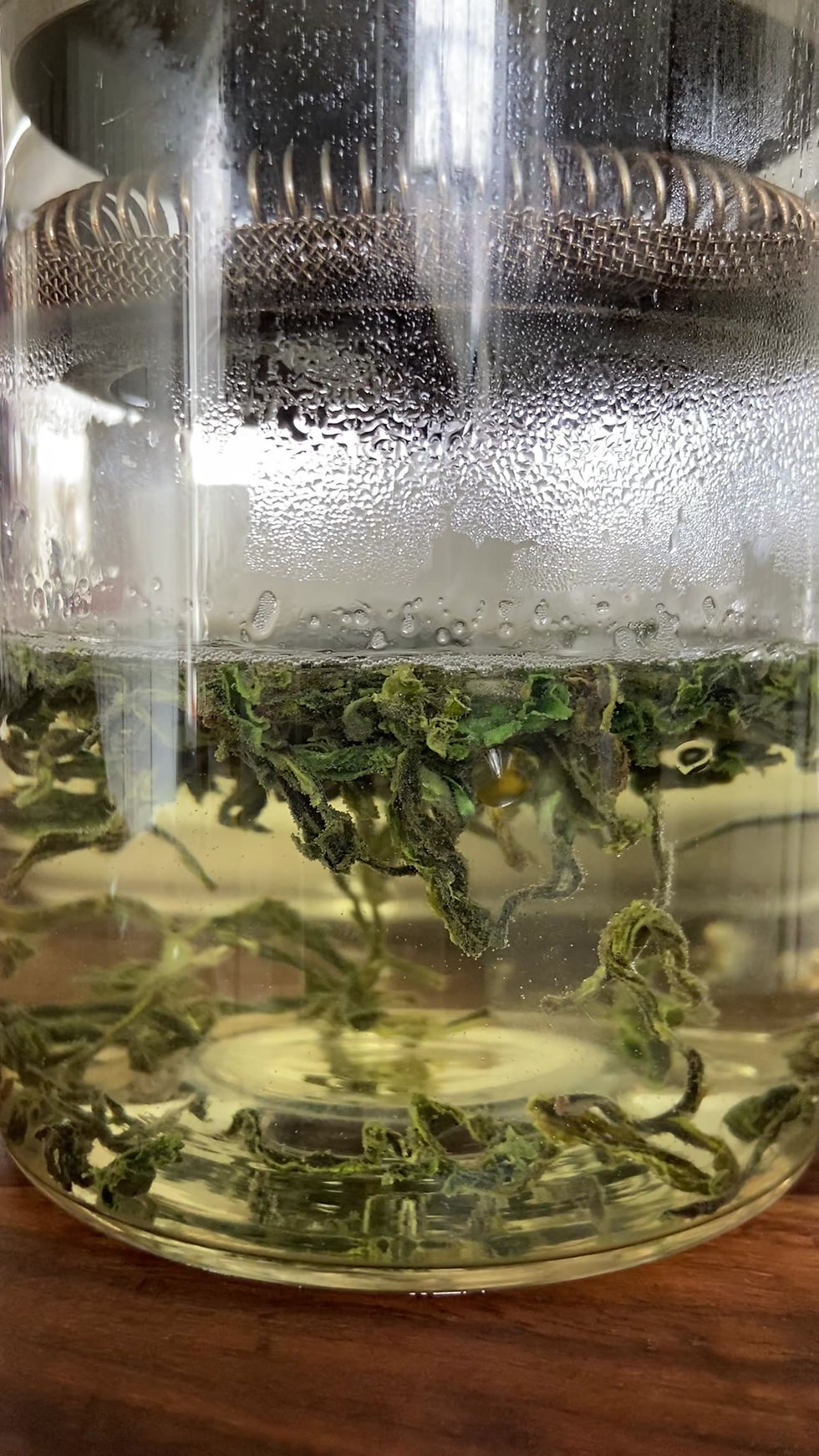The Season of Early Teas
- Kate Malone Hesser
- May 18, 2022
- 4 min read
When we moved to Vermont eleven years ago and we began partaking in all the local splendor around us, my concept of "seasons" became less about weather and more about what we were looking forward to. The year shaped up like this:
September 18 - December 23: 100 days until Christmas!
December 26 - Mid March: Ski season!
Mid March - Mid April: Maple Sugaring time!
Mid April - June 10ish: Total blur of events until the end of school and fiscal year
June 11 - Labor Day: Summer!
As I have been discovering new tea regions and seasonality I have also had to force myself to slow down due to my mysterious fatigue symptoms. That "total blur" starting in April has become the time of year I look forward to early spring teas. Looking forward to something that allows me to be peaceful, quiet, and contemplative is a welcome addition to rest of my seasons that are based on moving, doing, and going. I find solace in the patience it requires to identify the flavors in the pure, vulnerable leaves. I pull out my notes from the year before and compare nuances, imagining the differences in climate conditions from one year to the next. Green and unaged, these leaves tell all of the secrets of their terroir and their recent past.

First Flush Darjeeling tea arrives for US shopping in late March. Prized among teas from the region already known as the "Champagne" of teas, the First Flush are the first leaves picked in the season. Due to the high altitudes in the region, tea leaves from a single plant will have a mix of cellular maturity, producing a finished batch of leaves that are a mix of greens and browns. This is why, while technically a black tea, First Flush Darjeeling should be brewed at a lower temperature and for less time, as if you were steeping green tea leaves. The classic flavor is astringent with notes of muscat grapes, but I think of the flavor as "rolling." It starts off sharp at the front of the mouth, then opens into a fruitiness, before giving way to a refreshing brightness in the back of the mouth. I enjoy a quality First Flush Darjeeling the way some people like an afternoon glass of white wine on a sunny day. It is the perfect complement to a warm moment in April when you can smell the young buds on the trees, and the newly uncovered earth.

Chinese teas picked before the QingMing festival in early April are prized for their sweet young buds and awakening flavors. There are several unique and beautifully crafted varieties. I most look forward to Bi Luo Chun, a green tea that is typically grown in the Jiangsu region of China, though the one I am enjoying right now is from Taiwan. Bi Luo Chun or "Green Snail Spring" is one of China's famous teas and is known for its curlicue shape and unique aroma. The liquor it produces is thick and buttery the taste of steamed vegetables and a touch of marine flavor. To me it tastes like the broth we would rinse our steamers in during summers on Cape Cod. It is the one tea for which I have heard the advice to add the tea to the water, instead of the other way around. This is because the shape of the leaves causes them to "dance" up and down in the water. Which ever order you choose, I recommend steeping in a glass vessel so that you can watch the show!
I still feel I am a novice when it comes to the early Japanese teas, but that probably only makes me more eager. At this moment, I am waiting to hear that my local tea shop has received their shipment.

Sencha is the early plucked sun-grown tea and Shincha is first of the early plucked tea. Gyokuro is plucked at the same time, but it has been shaded for the last three weeks of its growing cycle to slow down photosynthesis. This produces a tea leaf supercharged with chlorophyll and antioxidants that is richer in color and silky to the touch. The leaves for all three varieties are formed into a flat needle-like shape. I love to drink these teas on a day when it feels too humid to make tea, to eat anything, or to do anything strenuous. I brew them several times a day and especially in place of my mid-morning matcha when it just feels too hot to whisk. These teas are SO GREEN, taste of steamed vegetables like broccoli, asparagus, and spinach, and feel nourishing and restorative. Drinking them hot helps me to feel cooler, refreshed, and maintain my energy. My fatigue is only made worse by the heat, so I keep these teas on hand during the hot weeks in the summer.
This season, with the world waking up all over the northeast US and the familiar sense of not knowing what to do to stay healthy, I cling to my tea cup. It has helped me to redefine what was chaotic few months every year as a period of gratitude and joy. I wish the same for you.
- K
Comments